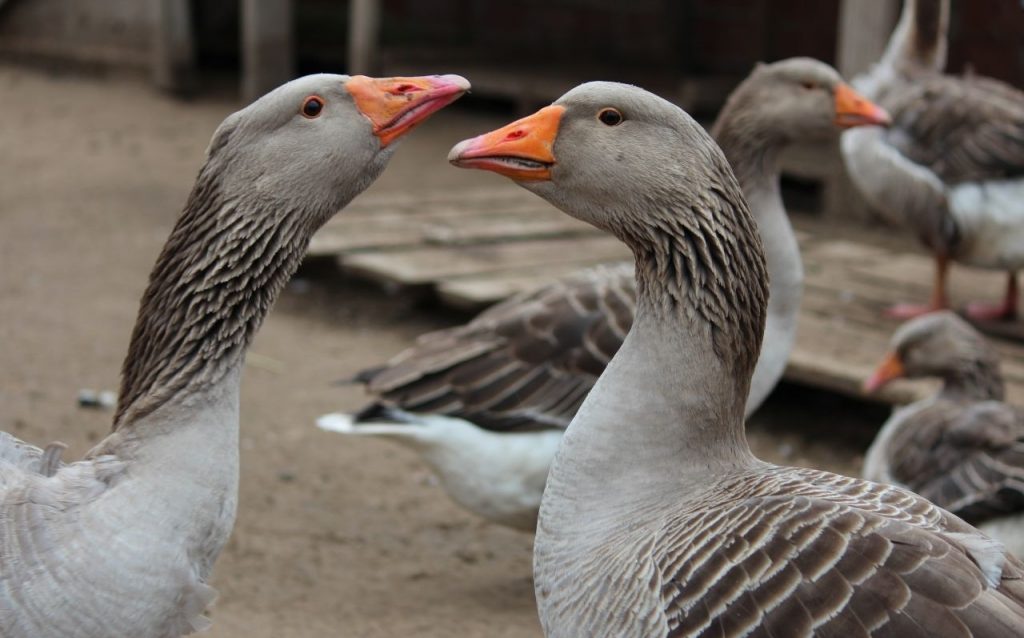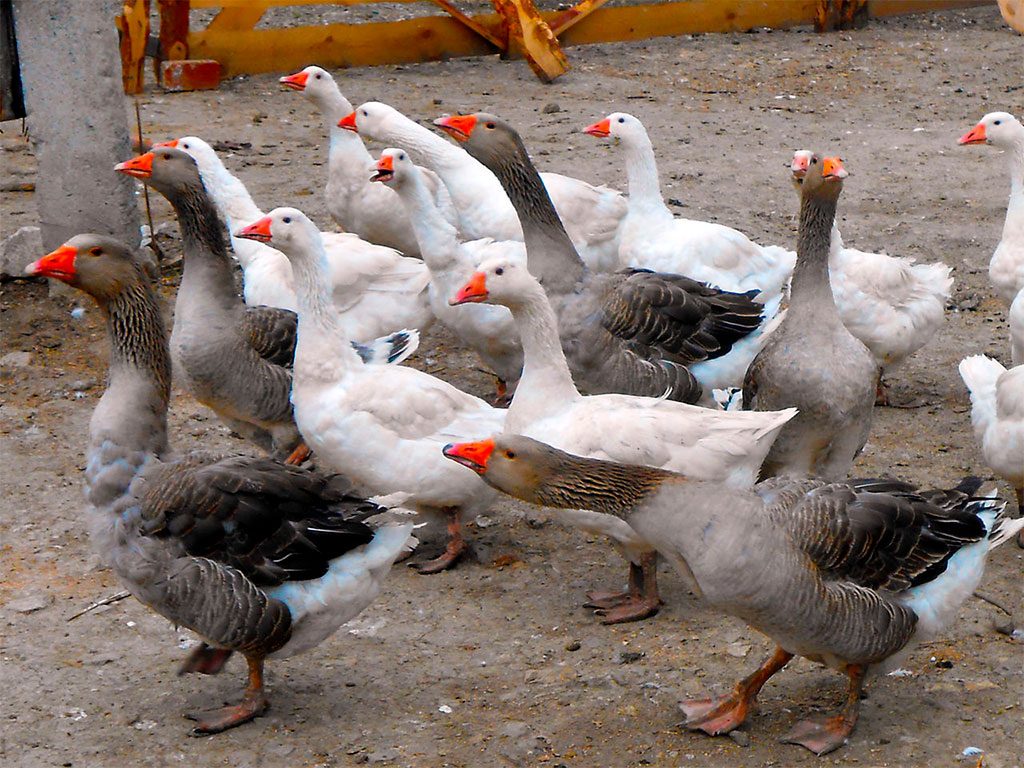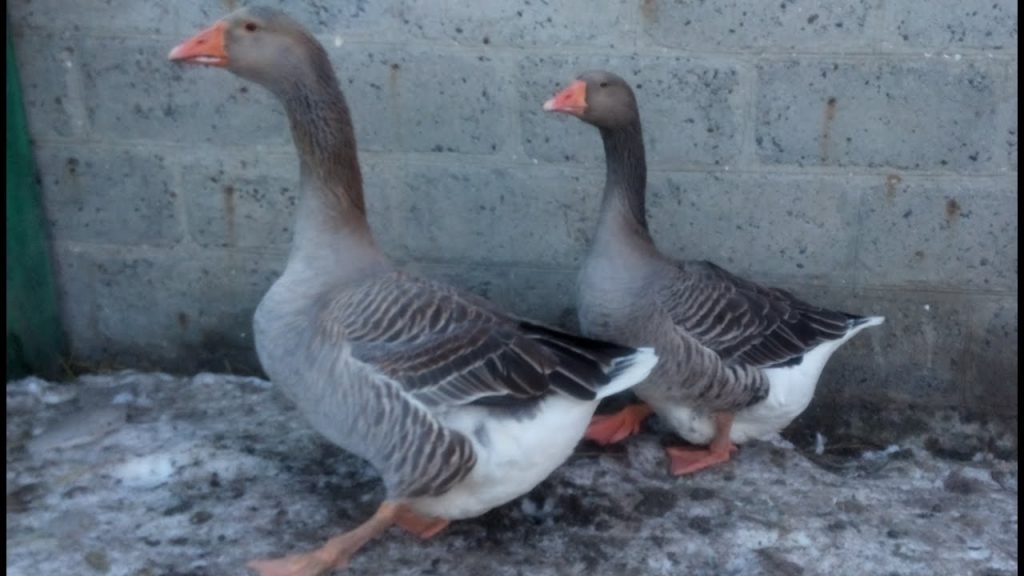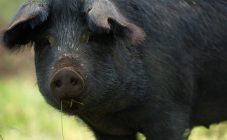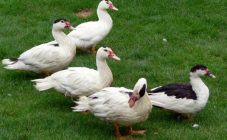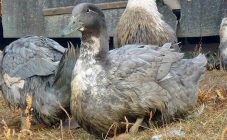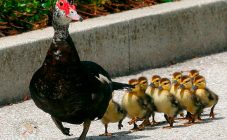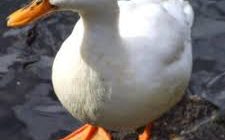Content:
The Ural gray geese is a relatively young breed, the result of the labor of domestic breeders over seven years of trials and experiments. Representatives of this breed are distinguished by their fertility, endurance and unpretentiousness. The Ural gray goose is in demand in Siberia and the Urals.
Characteristic
The Ural, or Shadrinskaya, breed of geese appeared in the 17th century on the territory of Russia in the Shadrinsky district of the Kurgan region. It is the result of mixing wild gray geese and selecting the best specimens. Despite the fact that the Ural breed generalizes the white, gray and checkerboard varieties, they are called Ural gray geese, regardless of color.
Detailed description:
- the head is oblong, large, with a straight beak;
- the beak is even, there are no cones and bulges;
- the neck is short with 16 vertebrae, like those of wild geese;
- the body is compact, well-fed;
- plumage hard and dense;
- plumage color is grayish: dark on the back, upper part of the neck, tips of the wings and light on the belly;
- beak and short legs bright orange or reddish;
- fatty fold in the abdomen;
- the back is wide;
- the chest is rounded with plumage of a lighter shade;
- the wings are pressed tightly to the body;
- the tail is short and pointed.
Ural gray geese are characterized by a large constitution. The Ural white geese breed is inferior to the gray one in body weight. Gray males are capable of weighing 6.5 kg. The goose weighs slightly less - from 5 to 5.5 kg. A young goose at the age of five months has a body weight of about 5 kg. The egg production index is not too large, only about 30 eggs per year, since the breed has a meat orientation. One egg reaches a mass of 150 g, with age the indicator increases to 165 g. The hatchability of goslings is also small - from 50 to 55%.
The difference between a gander and a goose
The ability to distinguish between the sex of the geese is essential for proper flock formation. The success of the business directly depends on this.
An adult gander from a goose can be distinguished quite quickly by its size, it is larger. The male behaves like a true leader, protects his flock, covering it with his chest. During sexual intercourse, males fight for the right to be the first. They have a rougher and more husky voice than females. Males behave imposingly, emphasizing their superiority. The gander's neck is always extended upwards. Females humbly lower their necks, showing their submission. But this characteristic may not work for young males who behave calmly like females.
How to determine the sex of goslings? There are several ways:
- "Tarzanka". The chick is turned upside down. Holding it by the paws, they lower it sharply downward, pretending to fall. The male always reaches for the legs, and the female simply turns her head.
- The size. Males from the first days of life look larger than females, the head is larger, the neck is slightly longer.
- Character. Males show themselves as leaders from the very beginning, make noise, inspect the territory, run to the feeding trough. The gait is confident. Females behave modestly and quietly, showing activity only when hungry.If you frighten the herd, then it is the males who will pull their necks up, looking out for enemies.
- Scientific method. The most accurate way to determine sex, both in young and in adults, is to examine the genitals. The goose is laid on its back on the table so that its head hangs down and it could not interfere with the examination. You need to throw back the tail and open the cloaca. The genital organ of the gander looks like a process twisted into a curl. Very young chicks are examined with a magnifying glass.
Features of the content
Shadrinskaya breed of geese requires an individual approach to the content. Ural white and gray geese are usually kept together, as they need similar conditions.
Poultry house
The poultry house is made of wood, without heating. You just need a simple ventilation system, wall insulation when the temperature drops below –25 degrees. It is recommended to install a house with a window to the south. It is advisable to calculate the area so that there is 1 square meter for one individual. m of space.
One goose requires approximately 40 kg of bedding. Dampness, drafts lead to colds, inflammation of the joints on the legs. Wet plumage loses its function. This leads to additional costs for the farmer as the geese eat more to withstand the cold. To counteract the wetting of the litter, as well as in case of a problem with the release of ammonia, it is replaced with the addition of 200 g of superphosphate per 1 square meter.
Birds thrive in natural light conditions. If the geese are being raised for sale, an additional light source can be installed to increase daylight hours.
House cleaning should be done weekly. It is imperative to change the bedding, clean out the containers for food and water. In summer, cleaning the premises may be done less often, since geese are more often in the fresh air.
It is recommended to periodically inspect geese (legs, eyes, beaks) for wounds or inflammations, and consult a veterinarian in time. A large loss of feathers during a strong molt is dangerous, as this will affect the health of the birds during the cold period.
Walking
Birds need walking space to stretch their legs and wings. The goose enclosure is being built in the open air, so a small shelter is needed in case of bad weather or intense heat. Fresh air and sunlight have a good effect on the functioning of the nervous, digestive, and reproductive systems.
It is very beneficial for geese to be in open areas covered with grass. They can eat grass to help them get rid of parasites. It's good if there is a pond or lake nearby. Swimming in water allows them to keep their skeleton and muscles in good shape, find additional nutrition in the form of fish and algae.
In winter, it is undesirable to let the flock out into the street, as the geese will lose weight due to the increase in energy consumption for heating the body.
Feeding
Ural gray geese, like white ones, are picky about food. Not the most expensive food for the price or made by yourself is suitable. But it must contain all the necessary vitamins and minerals.
Feed adult birds twice a day if walking, or thrice a day if geese stay in the house all day. The diet should be varied: greens, wet mash of vegetable waste, dry food. Green forage should prevail. If the basis of the diet is dry food, then you need to monitor access to clean warm water.
The main components of the menu:
- legumes and grains;
- bran;
- cake;
- meal;
- herbal flour;
- yeast;
- mineral supplements.
In autumn and winter, it is recommended to use succulent, water, twig feed. The feeding regimen is 3 times a day to ensure constant weight gain. Geese need additives in the form of gravel and chalk, placed in different containers.
Breeding
The female of the Ural gray goose has a strong maternal instinct, and the gander jealously protects its brood. Therefore, an incubator is not needed, unless only in large industries. The maternal instinct of the brood hen is so strong that the bird may not eat for several days, incubating the offspring. It is necessary to take this fact into account, feed and water the female yourself.
Eggs are laid every other day. Nests should be installed so that the geese do not see each other while hatching eggs, as they are at enmity. To avoid clashes between the geese, a feeder, a drinking bowl, and a container with minerals are installed near each nest. If the hen has set up multiple nests, move all eggs to the nest where she sits most of the time.
The level of viability of young animals reaches 75%. Young birds are used to obtain broiler breeds.
Advantages and disadvantages
The main advantages of the Ural gray goose breed:
- unpretentiousness;
- frost resistance;
- excellent quality of feather and down;
- the possibility of keeping on pastures;
- good adaptive abilities;
- good brooding instinct in hens;
- viability;
- fattening speed;
- high quality meat.
With good feeding, the goose can increase its productivity in a short time. Down is characterized by a branched structure providing high thermal insulation properties. Therefore, the bird calmly survives the cold season in the house without heating. Even with a minimum of conditions and pasture, the Ural gray geese grow, hatch their offspring themselves, and resist diseases.
The disadvantages of the breed include a low level of productivity, low hatchability of goslings.
Keeping geese of the Ural gray or white breed is an excellent chance for beginners. Small mistakes in content won't do them much harm. Experienced farmers also appreciate this breed.
